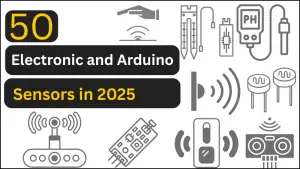Sensors are devices used to detect and measure physical phenomena such as temperature, light, motion, and pressure. They play a critical role in applications like automation, robotics, IoT, and environmental monitoring. Below is a categorized list of widely used Arduino sensors, with detailed explanations and popular examples.
Arduino Sensors List
Temperature sensors
Temperature sensors measure the thermal state of an environment or object and are essential in applications like climate control, industrial automation, and IoT systems.
1. Thermistor
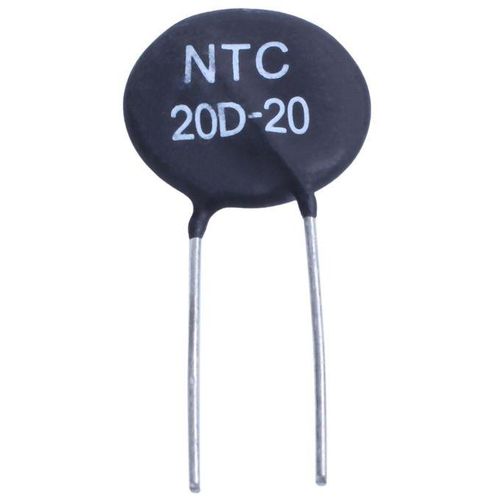
Thermistors are resistors that change their resistance with temperature. They are of two types:
- NTC (Negative Temperature Coefficient): Resistance decreases as temperature increases.
- PTC (Positive Temperature Coefficient): Resistance increases with rising temperature.
Application: Thermistors are widely used in appliances like air conditioners and ovens for precise temperature control.
2. LM35
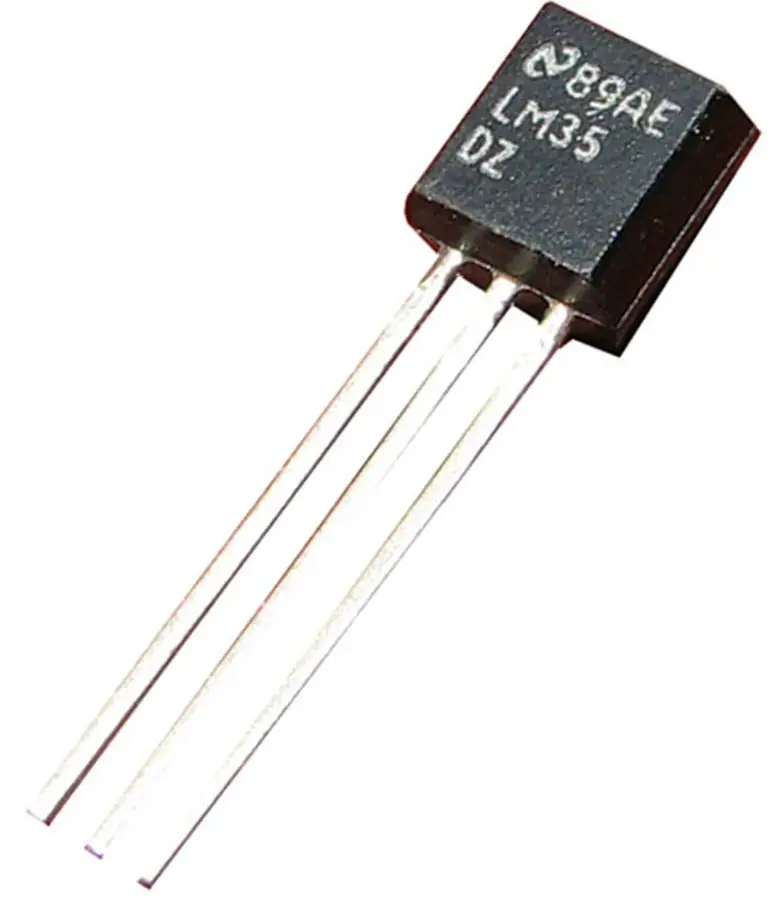
The LM35 is an analog temperature sensor that outputs a voltage proportional to the temperature in Celsius. It is popular for its high accuracy and ease of use.
Pinout:
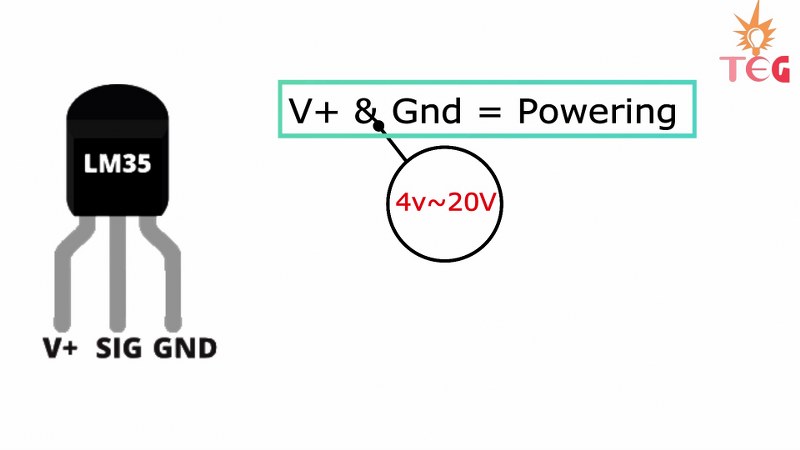
- V+ – Connects to a 5V power supply
- SIG – Outputs a voltage proportional to temperature
- GND – Ground connection
3. DS18B20
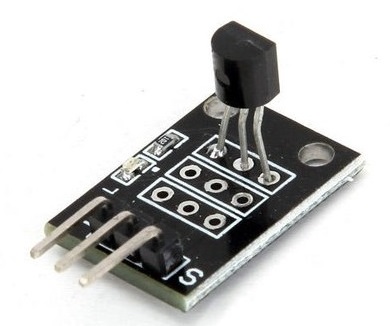
The DS18B20 is a digital temperature sensor communicating via a one-wire protocol. It supports multiple sensors on a single data line, making it ideal for IoT projects.
This sensor has a waterproof version as well, encased in a stainless steel tube.

Light sensors
Light sensors detect the intensity of light and are used in smart lighting, cameras, and optical devices.
4. LDR (Light Dependent Resistor)

LDRs change their resistance in response to light intensity. They are widely used in light-sensitive devices like streetlights and burglar alarms.
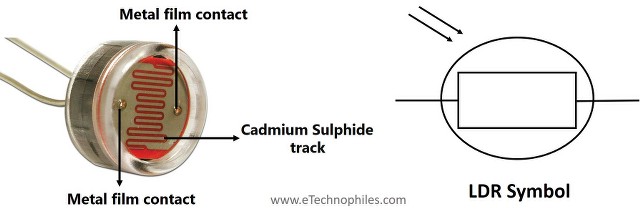
LDRs have two terminals: connect one to the power supply and the other to a resistor for a voltage divider configuration.
5. Photodiode
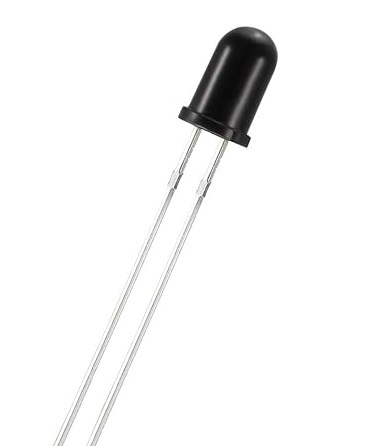
Photodiodes convert light into an electrical current. They are commonly used in light meters and fiber optic communication systems.

Pinout:
- Anode – Positive terminal
- Cathode – Negative terminal
Proximity sensors
Proximity sensors detect the presence or absence of objects without physical contact. They are extensively used in robotics, automation, and security systems.
6. Ultrasonic Sensor HCSR04

Ultrasonic sensors emits high-frequency sound waves and measures the time it takes for the echo to return after bouncing off an object. By calculating the time delay, it accurately determines the distance between the sensor and the object.
HC-SR04: Measures distances from 2 cm to 400 cm with an accuracy of ±3 mm. Widely used in obstacle avoidance systems.
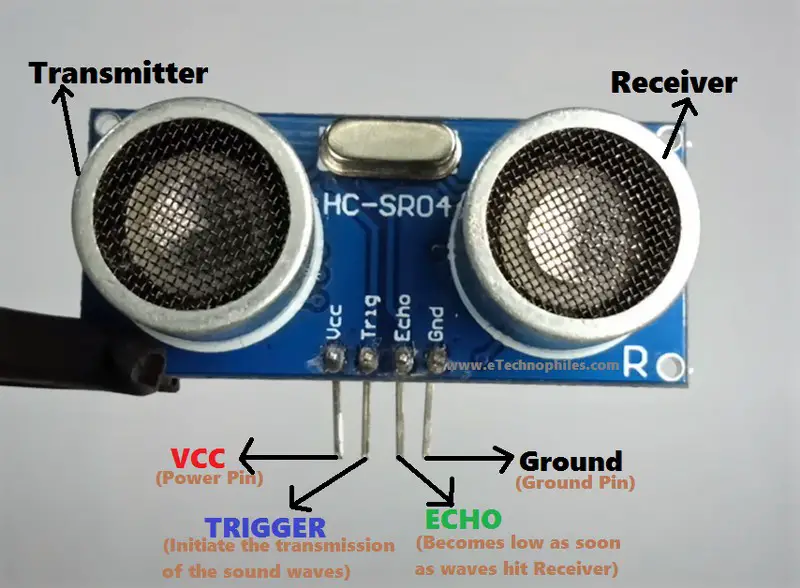
Pinout:
- VCC – Connects to a 5V power supply
- Trig – Trigger pin for sending ultrasonic pulses
- Echo – Outputs a pulse proportional to the distance
- GND – Ground connection
7. IR obstacle avoidance sensor

Obstacle detection sensors identify physical barriers in a device’s path. They are widely used in robotics and autonomous systems. These sensors use infrared light to detect obstacles and are widely used in line-following and obstacle-avoiding robots.
Pinout:

- VCC – Connects to a 3.3V or 5V power supply
- GND – Ground connection
- OUT – Digital signal output
Motion sensors
Motion sensors detect changes in position or acceleration. They are used in wearable devices, drones, and vehicle tracking systems.
8. Accelerometer(ADXL345)

ADXL345 is a 3-axis digital accelerometer that measures acceleration along the X, Y, and Z axes. It provides high-resolution (13-bit) output data via I2C or SPI interface. Commonly used in motion detection, orientation sensing, tilt measurement, and vibration monitoring applications.
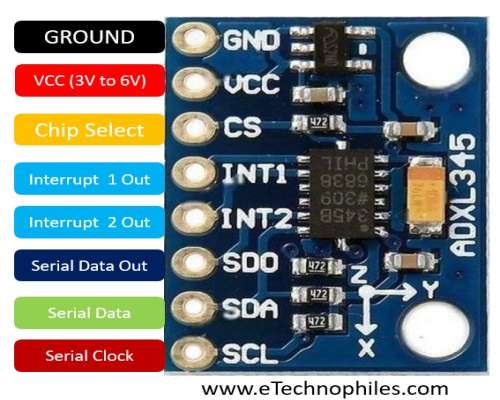
Pinout:
- VCC – Power Supply
- GND – Ground
- SCL – Serial Clock (for I2C or SPI)
- SDA – Serial Data (for I2C)
- SDO – SPI Data Output / I2C Address Selection
- CS – Chip Select (for SPI)
- INT1 – Interrupt 1 Output
- INT2 – Interrupt 2 Output
9. PIR Sensor
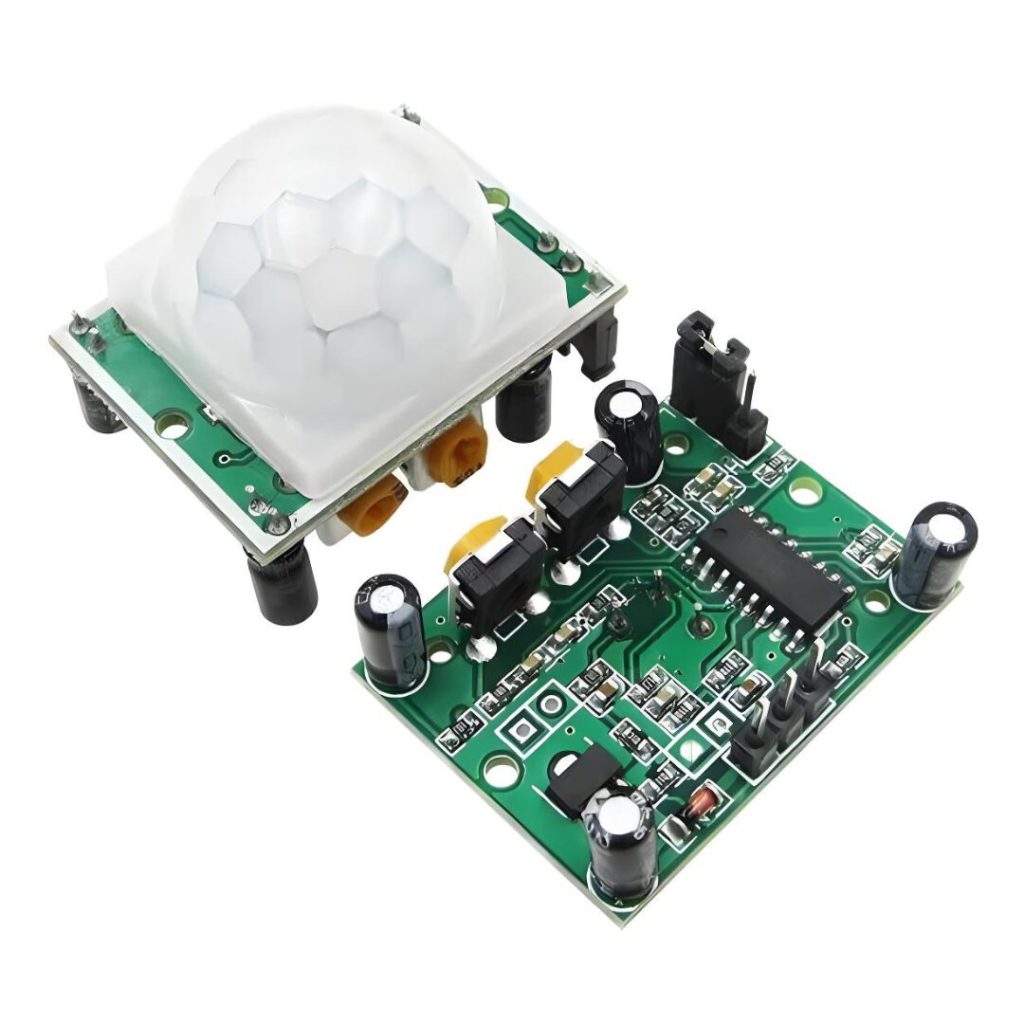
A Passive Infrared (PIR) sensor measures infrared light emitted by objects in its field of view. When a warm body, like a human or animal, moves across the sensor’s range, it detects a change in infrared levels and triggers a digital output.
PIR sensors are widely used in motion-activated lighting, security alarms, automatic doors, and occupancy detection systems. They are energy-efficient, cost-effective, and ideal for non-contact motion sensing applications.
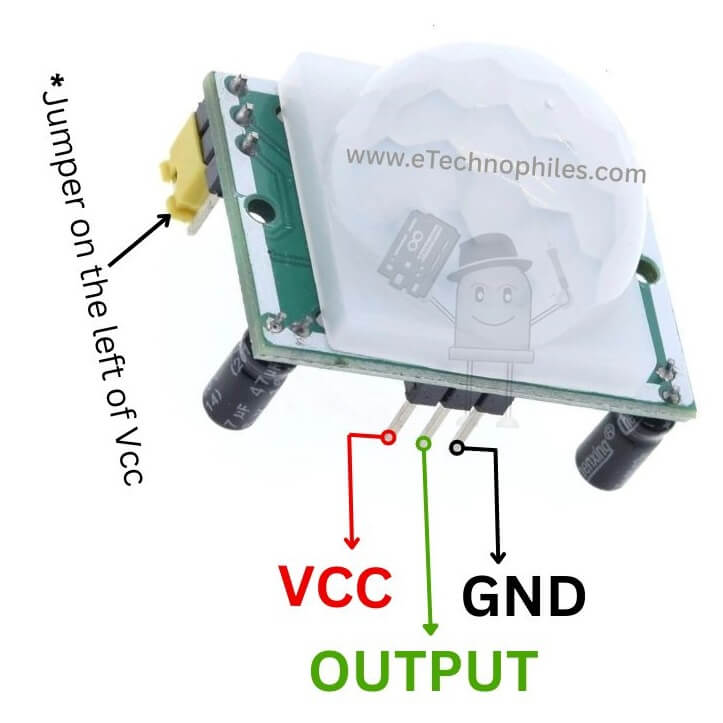
Pinout (HC-SR501 Module):
- VCC – Power supply (typically 5V)
- OUT – Digital output (HIGH when motion is detected)
- GND – Ground
10. Gyroscope + Accelerometer(MPU6050)

MPU6050 Sensor – Measures angular velocity and acceleration. This module combines a 3-axis gyroscope and a 3-axis accelerometer in a single chip, making it ideal for applications that require motion sensing, orientation detection, gesture recognition, and inertial measurement.
The MPU6050 communicates via the I2C protocol and is commonly used in robotics, drones, and wearable devices for precise tracking of movement and rotation in 3D space.
Pinout:
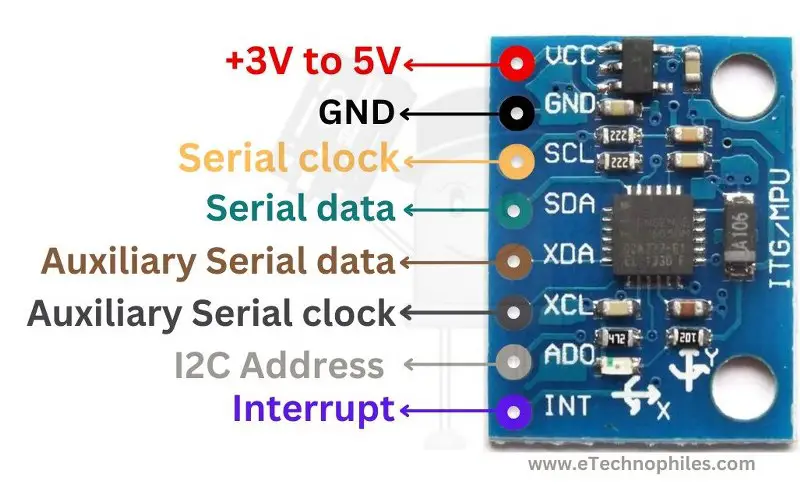
- VCC – Power Supply (+3.3V to 5V)
- GND – Ground
- SCL – Serial Clock Line (I2C)
- SDA – Serial Data Line (I2C)
- XDA – Auxiliary Serial Data (for external sensor)
- XCL – Auxiliary Serial Clock (for external sensor)
- ADO – I2C Address Selection
- INT – Interrupt Output
11. Rotary encoder
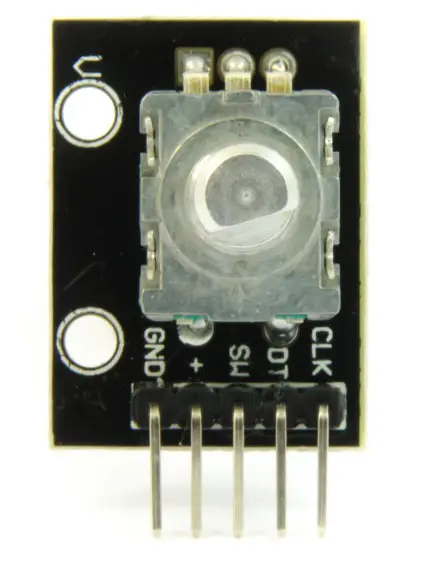
This sensor detects the rotational position and direction of a shaft, converting mechanical motion into electrical signals. It is commonly used for determining angular displacement and is ideal for applications that require precise position feedback, such as motor control, automation, and robotic movement.
Rotary encoders are available in two main types: incremental and absolute. They are widely used in robotics, CNC machines, and industrial systems for accurate tracking of rotation and directional input.
Pinout:
- GND – Ground connection
- VCC – Connects to a 3.3V or 5V power supply
- CLK – Clock pulse output
- DT – Data output
- SW – Button switch
12. Tilt sensor

This sensor determines whether an object is tilted beyond a certain angle. It’s a simple, low-cost device that responds to changes in position, making it useful for detecting movement or orientation shifts.
Tilt sensors are commonly used in alarm systems, safety devices, and simple motion-triggered applications. While basic models provide binary output (tilted or not tilted), more advanced versions can offer multi-directional tilt detection for enhanced accuracy.
Here’s the continuation of the detailed guide for the remaining sensor categories:
Pressure sensors
Pressure sensors measure the force exerted by a fluid or gas and are commonly used in weather stations, medical devices, and industrial automation.
13. Barometric pressure sensor(BME280/BMP280)
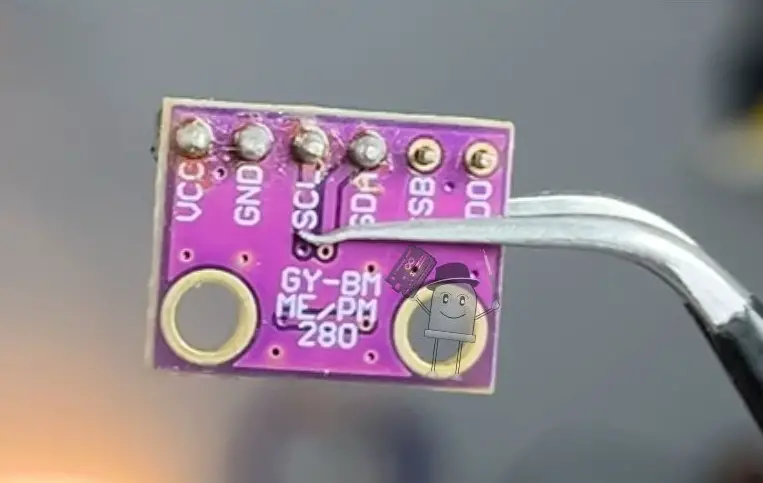
Barometric sensors measure atmospheric pressure, often used for weather monitoring and altitude detection. BME280 is a digital sensor with high precision, capable of measuring both pressure and temperature. It communicates via I2C or SPI.
Pinout:

- VCC – Power Supply
- GND – Ground
- SCL – Serial Clock Line
- SDA – Serial Data Line
- CSB – Chip Select (used for SPI; keep HIGH for I2C)
- SDO – I2C Address Selection
14. Piezoelectric
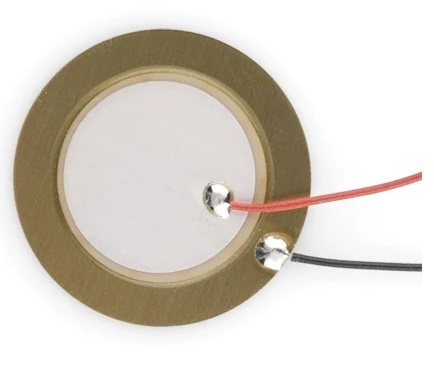
Piezoelectric sensors use piezoelectric materials to convert pressure into an electrical signal. These sensors are often used in medical equipment like ventilators.
Pinout:
They have two terminals:
- Positive terminal in Red color
- Negative terminal in Black color
15. Strain Gauge

Measure pressure or force by detecting changes in resistance due to strain. They are used in load cells for weighing systems.
Pinout:
- Wire 1 – One terminal of the resistive foil.
- Wire 2 – Second terminal of the resistive foil.
No polarity – Both wires are interchangeable.
Gas sensors
Gas sensors detect specific gases in the air and are critical in environmental monitoring and safety systems.
16. MQ Series gas sensor

These sensors identify the presence and concentration of specific gases in the environment. They work by measuring changes in electrical resistance when gas molecules interact with a sensitive material inside the sensor.
Gas sensors are widely used in safety systems, home automation, industrial monitoring, and environmental sensing. Common applications include gas leak detectors, air quality monitors, and smoke alarms. Different models are calibrated for specific gases like methane (CH₄), propane (C₃H₈), carbon monoxide (CO), and more.
- MQ-2: Measures gases like methane, LPG, and smoke. It has both analog and digital outputs for versatile use.

Pinout:
- VCC – Connects to a 5V power supply
- GND – Ground connection
- AOUT – Analog signal output
- DOUT – Digital signal output
17. Carbon dioxide (CO2) sensor
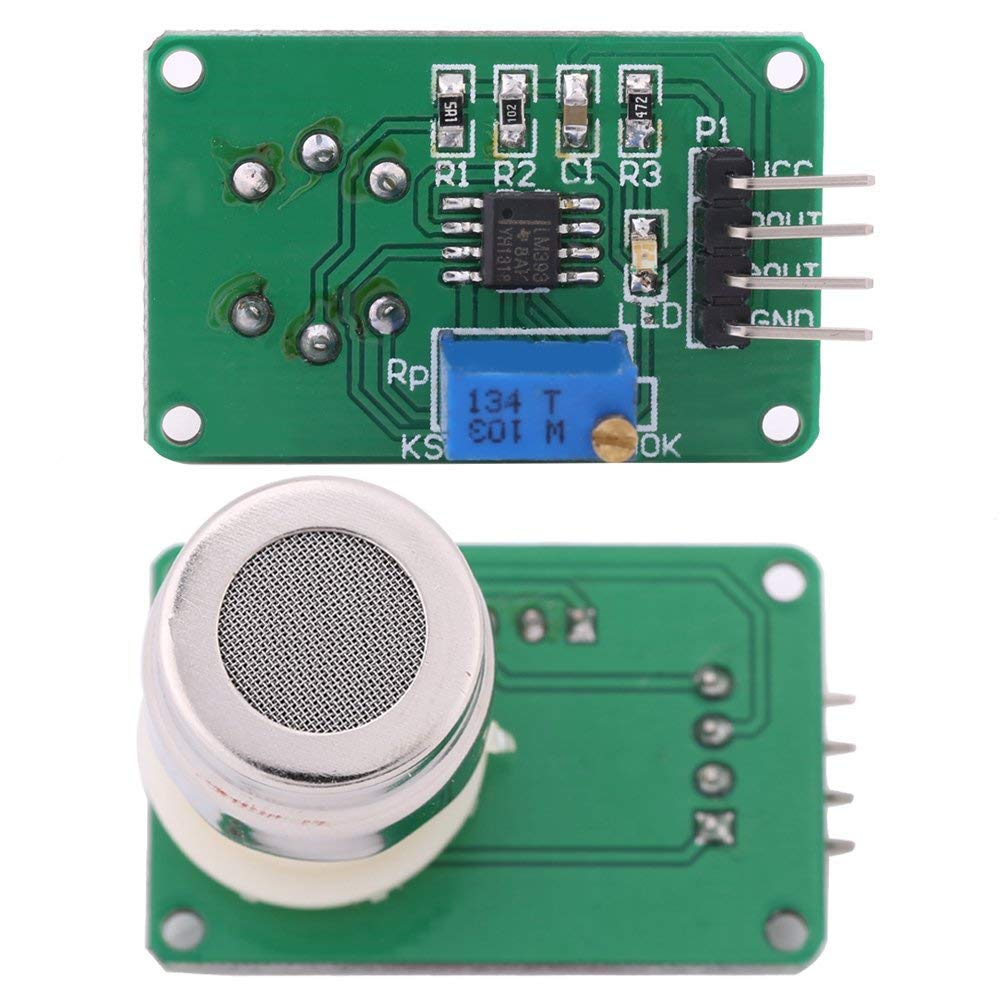
This sensor detects and quantifies the amount of CO₂ present in the environment, typically in parts per million (ppm). It uses methods such as non-dispersive infrared (NDIR) technology to provide accurate and reliable readings.
- MG811: Known for its high accuracy in CO2 detection, commonly used in greenhouses and HVAC systems.
Sound and vibration sensors
Sound and vibration sensors detect acoustic waves or mechanical vibrations. They are used in audio recording, machinery monitoring, and alarms.
18. Sound sensor
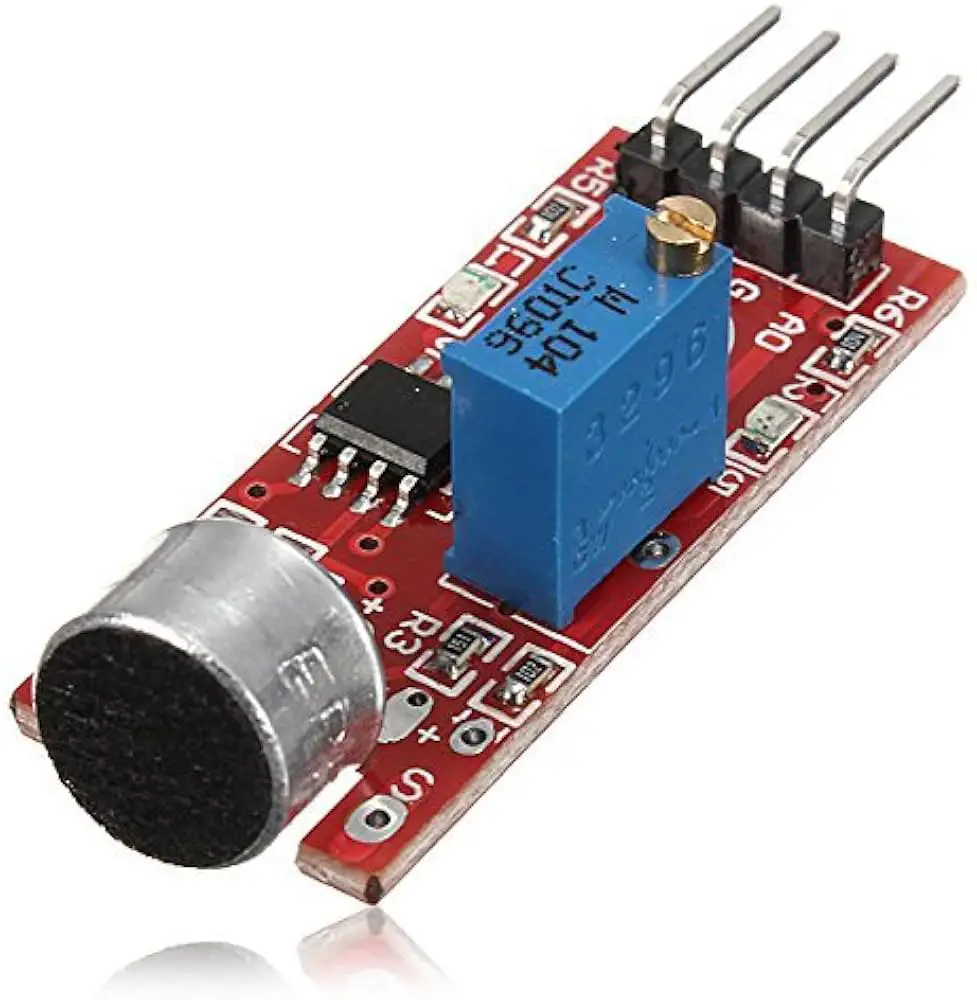
This sensor captures ambient sound and transforms it into an electrical signal that can be read by microcontrollers or audio systems. It typically uses an electret or MEMS microphone element and may include built-in amplification for enhanced sensitivity.
Sound sensors are ideal for applications such as voice recognition, sound detection, audio recording, and acoustic monitoring. They are widely used in smart devices, security systems, hearing aids, and interactive electronics.
Pinout:

- VCC – Connects to a 2.7V–5.5V power supply
- GND – Ground connection
- AO – Analog output
- DO – Digital output
Touch and force sensors
Touch and force sensors detect physical contact or pressure. They are widely used in consumer electronics, robotics, and medical devices.
19. Capacitive touch sensor

When a conductive object, like a human finger, comes near or touches the sensor surface, it alters the local electric field, causing a change in capacitance. This change is detected and interpreted as a touch input.
Capacitive touch sensors are commonly used in touch-sensitive switches, keypads, interactive displays, and modern consumer electronics. They offer high sensitivity, durability, and a sleek, button-less interface, making them ideal for compact and intuitive designs.
Read this tutorial on how to use a touch sensor with ESP32.
20. Force sensitive resistor (FSR)

This sensor detects changes in resistance when pressure is applied, allowing it to quantify the amount of force exerted. The output varies with the intensity of the applied load, making it useful for dynamic force measurement.
Force sensors are commonly used in robotics for grip strength monitoring, ensuring delicate yet secure handling of objects. They are also found in wearable devices, electronic drums, pressure-sensitive touchpads, and industrial automation systems.
Current and voltage sensors
These sensors measure electrical current or voltage in a system, critical for power monitoring and protection circuits.
21. ACS712 current sensor
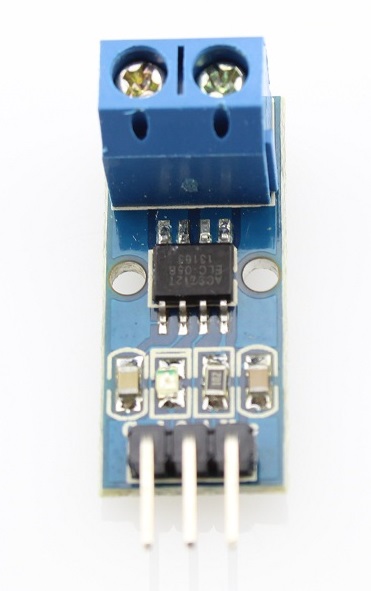
This sensor detects and converts current (AC or DC) into a proportional voltage or digital signal that can be read by a microcontroller or monitoring system. It works based on principles such as the Hall effect or shunt resistance.
Current sensors are widely used in power management, battery monitoring, motor control, and energy metering applications. They help ensure safety, efficiency, and accurate current tracking in industrial systems, home automation, and IoT devices.
Pinout:
- VCC – Connects to a 5V power supply
- GND – Ground connection
- OUT – Analog output proportional to the current
22. Voltage divider
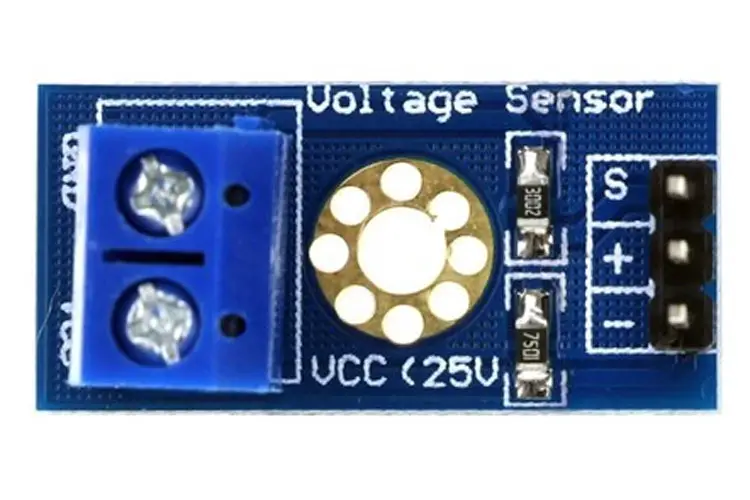
This sensor detects voltage levels and converts them into a scaled analog or digital signal suitable for microcontroller input. It often uses a voltage divider or isolation circuitry to safely monitor higher voltages.
Voltage sensors are commonly used in battery monitoring, power supply diagnostics, energy management systems, and industrial automation. They provide crucial feedback for ensuring proper operation, detecting faults, and protecting electronic components.
Magnetic field sensors
Magnetic field sensors detect the presence, strength, and direction of magnetic fields. They are widely used in navigation systems, motors, and industrial automation.
23. Magnetometer(HMC5883L)

This sensor detects magnetic flux density and outputs data corresponding to the intensity and orientation of the magnetic field. It typically uses the Hall effect or magnetoresistive principles to sense changes in magnetic fields.
Magnetic field sensors are used in compasses, position and speed detection, current sensing, and proximity detection. They are essential in applications such as navigation systems, robotics, automotive systems, and electronic compasses for determining direction and orientation.
- HMC5883L: A 3-axis magnetometer often used in digital compasses and navigation systems.
Pinout:
- VCC – Connects to a 3.3V or 5V power supply
- GND – Ground connection
- SCL – I2C clock line
- SDA – I2C data line
24. Hall effect sensor(A3144)

This sensor operates based on the Hall effect principle, generating a voltage when exposed to a magnetic field. It can detect the presence, strength, and polarity of magnetic fields, making it ideal for non-contact position and speed detection.
Hall effect sensors are widely used in automotive systems (like crankshaft and wheel speed sensors), brushless DC motor control, proximity sensing, and magnetic encoders. They offer reliable, durable performance in harsh environments due to their solid-state nature.
- A3144: A digital Hall Effect sensor used in motor speed detection.
Pinout:
- VCC – Connects to a 5V power supply
- GND – Ground connection
- OUT – Digital output
Fluid level and flow sensors
Fluid sensors measure liquid levels or flow rates. They are extensively used in water management and industrial systems.
25. Water level sensor

This water sensor detects the liquid level in tanks or containers. Commonly used in automatic water pumps, tank level monitoring, and home automation for water level detection and control.
Pinout:

- VCC – Connects to a 3.3V or 5V power supply
- GND – Ground connection
- S – Analog output
26. Flow Sensors
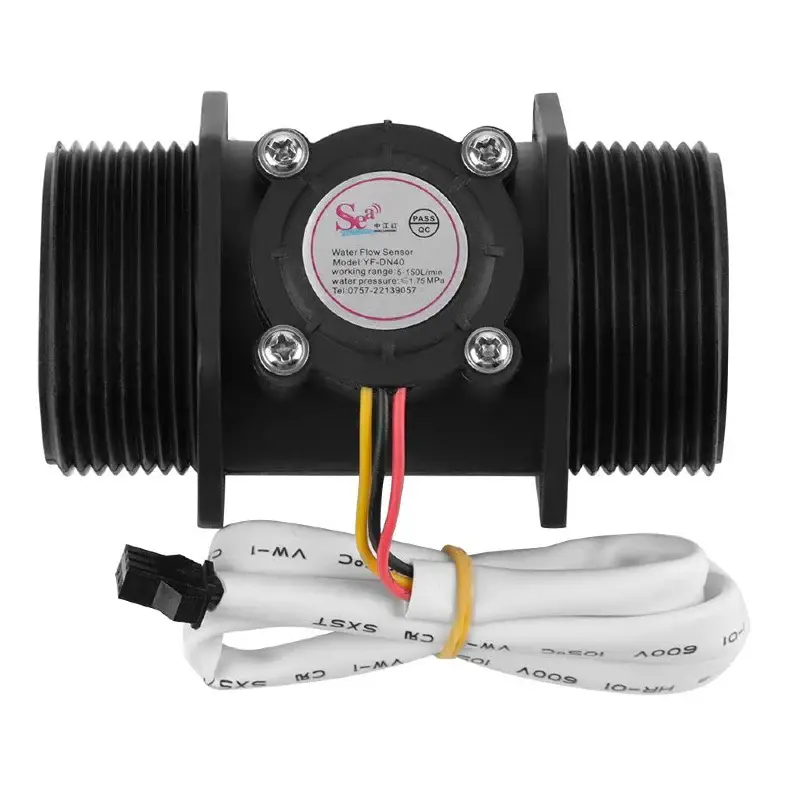
This sensor detects the volume or mass of a liquid or gas passing through it over time, typically providing output in liters per minute (L/min) or cubic meters per hour. It may use methods such as turbine rotation, differential pressure, or ultrasonic waves to measure flow.
Flow sensors are commonly used in water dispensers, irrigation systems, HVAC units, medical equipment, and industrial fluid control. They are essential for monitoring usage, detecting leaks, and ensuring efficient and safe operation in fluid systems.
- YF-S201: Measures liquid flow rates with pulse output proportional to the flow.
Pinout:
- VCC – Connects to a 5V power supply
- GND – Ground connection
- OUT – Pulse output
Speed sensors
Speed sensors measure the rotational or linear speed of an object. They are used in automotive systems, motors, and robotics.
27. Speed sensor
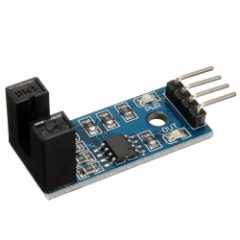
This sensor detects how fast an object is rotating, usually by counting pulses generated by a rotating component such as a gear, magnet, or optical encoder. The output is typically in revolutions per minute (RPM).
This sensor is widely used in automotive systems (e.g., wheel speed or engine RPM), industrial machinery, robotics, and electric motors. They provide critical feedback for motion control, speed regulation, and safety systems.
Pinout:
Typically includes:
- VCC – Power supply
- GND – Ground connection
- OUT – Pulse output signal
Environmental sensors
Environmental sensors measure conditions like temperature, humidity, and soil moisture. These sensors are critical in smart agriculture, weather monitoring, and IoT projects.
28. DHT11/DHT22 temperature and humidity sensor

These sensors provide environmental data by detecting ambient temperature and the amount of moisture in the air. They are essential for weather stations, HVAC systems, greenhouses, and IoT-based environmental monitoring.
Popular options include the DHT11, which is a cost-effective sensor suitable for basic applications but with lower accuracy and a narrower range. The DHT22, on the other hand, offers higher precision, a wider measurement range, and better stability, making it suitable for more demanding applications.
- DHT11: Measures temperature (0°C to 50°C) and humidity (20–90% RH) with an accuracy of ±2°C and ±5% RH. Suitable for basic indoor environmental monitoring.
Pinout:

- VCC – Connects to a 3.3V or 5V power supply
- GND – Ground connection
- DATA – Outputs temperature and humidity data
29. Soil moisture sensor

Soil moisture sensor measures the volumetric water content by detecting changes in soil conductivity or capacitance. It helps determine whether the soil is dry, moist, or wet, making it ideal for irrigation control and agricultural monitoring.
It is commonly used in smart farming, gardening systems, and environmental research. They help conserve water by enabling automated watering only when necessary, improving plant health and resource efficiency.
Pinout:

- VCC – Connects to a 3.3V or 5V power supply
- GND – Ground connection
- AOUT – Analog output for soil moisture level
- DOUT – Digital output (threshold-based)
30. Rain detection sensor
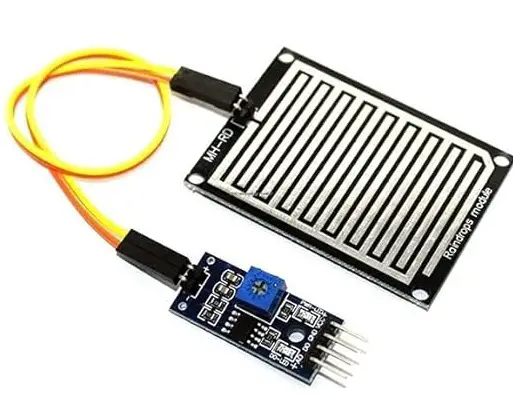
This sensor identifies moisture on its surface using a conductive grid that changes resistance when wet. It provides a digital or analog signal to indicate rainfall, allowing systems to respond accordingly.
Commonly used in automatic wiper systems, weather monitoring stations, smart irrigation, and home automation to prevent overwatering or react to rain conditions in real time.
Pinout:
- VCC – Connects to a 3.3V or 5V power supply
- GND – Ground connection
- AOUT – Analog output
- DOUT – Digital output
31. Anemometer
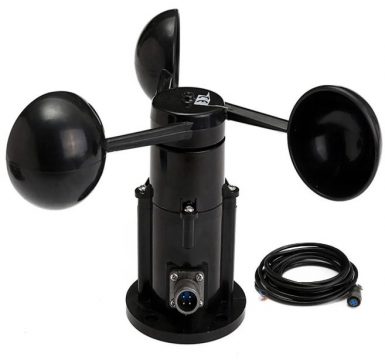
An anemometer detects the movement of air and provides wind speed readings, typically in meters per second (m/s) or kilometers per hour (km/h). It operates using rotating cups, ultrasonic waves, or pressure differences, depending on the type.
Commonly used in meteorological stations, renewable energy systems (like wind turbines), and environmental monitoring projects, anemometers help track weather conditions, ensure safety, and optimize performance in wind-sensitive systems.
Pinout:
- VCC – Power supply
- GND – Ground connection
- OUT – Pulse output proportional to wind speed
32. pH sensor

pH sensor detects the hydrogen ion concentration in liquids, providing a pH value that indicates how acidic or basic the solution is, typically on a scale from 0 to 14. It generates a voltage that varies with pH level and is interpreted by a microcontroller or monitoring system.
- Gravity Analog pH Sensor: Provides an analog output proportional to the pH level.
33. TDS (Total dissolved solids) sensor
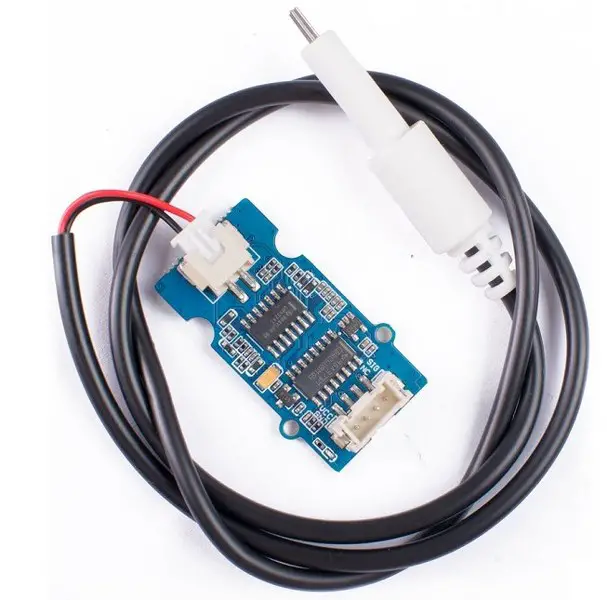
TDS (Total Dissolved Solids) sensors detect the combined content of inorganic salts and small organic substances dissolved in water, typically measured in parts per million (ppm). The sensor works by measuring the electrical conductivity of the water, which increases with higher levels of dissolved ions.
TDS sensors are commonly used in water quality monitoring, aquariums, hydroponics, and purification systems to ensure water safety and suitability for various applications.
Miscellaneous sensors
34. Flex sensor
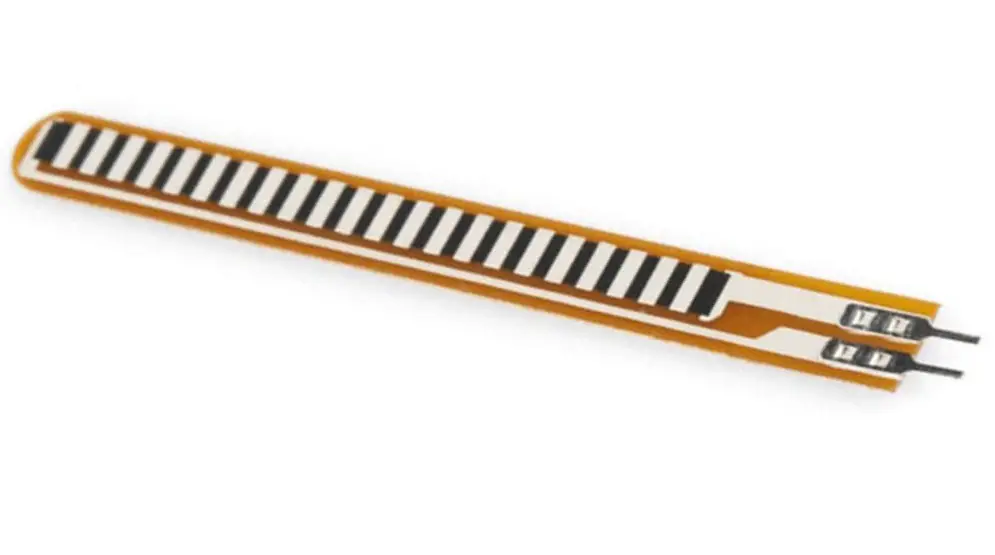
Flex sensors change resistance when bent, making them ideal for motion and gesture sensing in wearable devices. These sensors are used in applications like gloves for virtual reality or robotic control.
Pinout:
- One terminal – Connects to power
- Other terminal – Outputs variable resistance
35. Flame sensor module(KY-026)

Flame sensors detect flames or fire using infrared light. They are sensitive to wavelengths between 760 nm and 1100 nm, making them suitable for fire alarm systems. KY-026 flame sensor detects flames up to 1 meter away and provides both analog and digital outputs.
Pinout:
- VCC – Connects to a 3.3V or 5V power supply
- GND – Ground connection
- AOUT – Analog output for flame intensity
- DOUT – Digital output (detects flame presence)
36. Gesture sensor
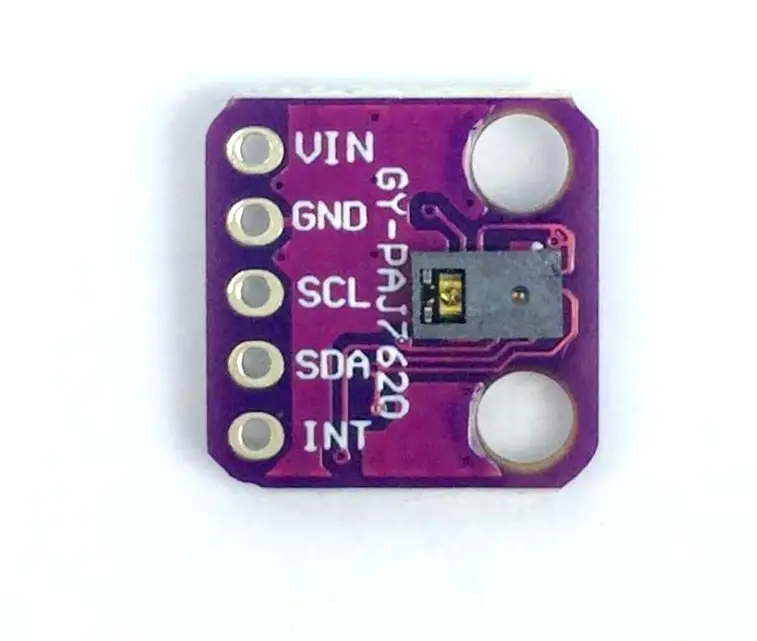
Gesture sensor track motion and position of the hand using infrared, optical, or time-of-flight technology to recognize gestures such as swipes, waves, or directional movements. The detected gestures are translated into commands, allowing intuitive, contactless interaction with electronic systems.
These are widely used in smart home devices, interactive displays, robotics, and wearable technology for seamless user interfaces without physical contact.
Pinout:
- VCC – Connects to a 3.3V power supply
- GND – Ground connection
- SDA – I2C data line
- SCL – I2C clock line
- INT – Interrupt output
37. VL53L0X time-of-flight distance sensor

This sensor emits a focused laser beam and calculates the time it takes for the beam to reflect off an object and return (time-of-flight) or uses triangulation to determine distance. It provides highly accurate and fast distance measurements, even at longer ranges.
Laser distance sensors are commonly used in robotics, automation, industrial equipment, and smart devices where precise distance or object detection is critical.
Pinout:
- VCC – Connects to a 3.3V power supply
- GND – Ground connection
- SCL – I2C clock line
- SDA – I2C data line
Color sensors
Color sensors detect the color of objects and are widely used in industrial automation and robotics.
38. TCS34725 RGB Color Sensor

Color sensor analyzes the intensity of red, green, and blue light reflected from a surface to determine its color. It typically uses filters and photodiodes to convert light into electrical signals, which are then processed to output precise color data.
Color sensors are commonly used in color-sorting robots, automated quality control systems, and interactive projects where color recognition is essential.
Pinout:
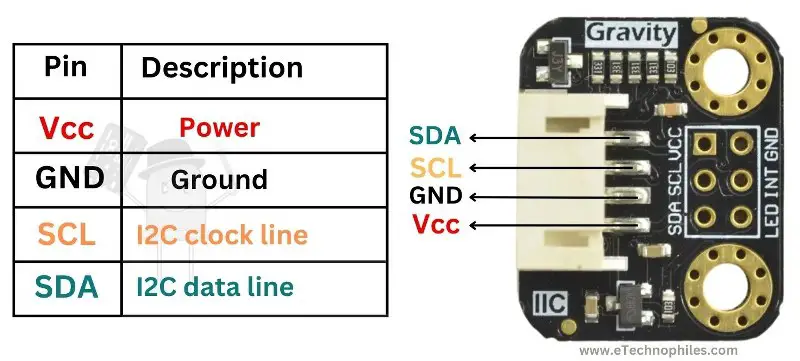
- VCC – Connects to a 3.3V or 5V power supply
- GND – Ground connection
- SCL – I2C Clock line
- SDA – I2C Data line
39. ML8511 UV sensor

This sensor detects UV radiation levels, typically in the UV-A and UV-B spectrum, and outputs a signal proportional to the intensity. It helps assess potential UV exposure risks and ensures proper functioning of UV sterilization or curing systems.
UV sensors are commonly used in wearable devices, weather stations, environmental monitoring, and industrial systems where UV detection is crucial for safety and effectiveness.
40. Pulse sensor
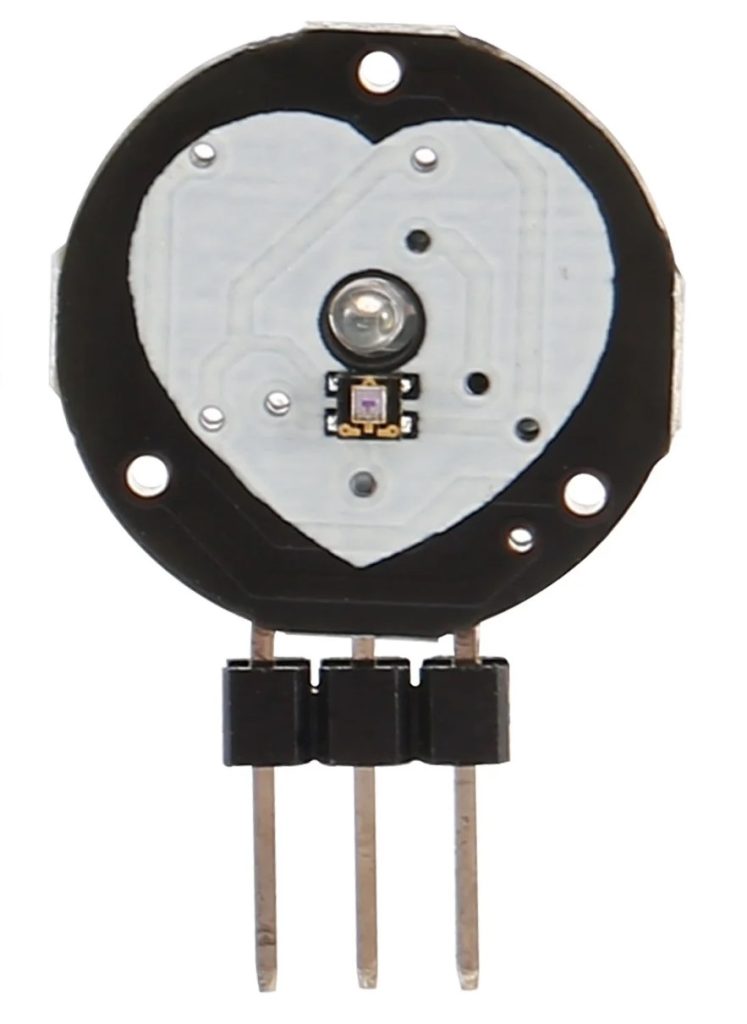
This sensor uses optical methods, typically with infrared or green LEDs and a photodetector, to measure changes in light absorption caused by pulsing blood. These variations correspond to heartbeats and are used to calculate heart rate in beats per minute (BPM).
Heart rate sensors are commonly used in fitness trackers, medical devices, wearable health monitors, and biofeedback applications for real-time pulse monitoring.
Pinout:
- VCC – Connects to a 3.3V or 5V power supply
- GND – Ground connection
- Signal – Outputs heart rate data
41. MAX30100 Pulse oximeter and heart rate sensor
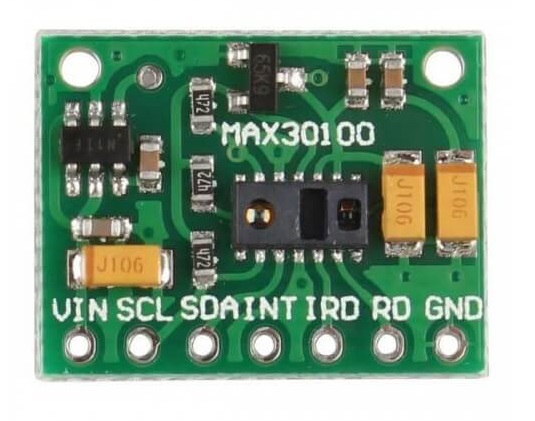
This sensor uses photoplethysmography (PPG) by emitting red and infrared light through body tissue (typically a fingertip or earlobe) and detecting how much light is absorbed. The absorption varies with blood volume and oxygen saturation, allowing accurate measurement of pulse and SpO₂ levels.
Widely used in wearable health devices, fitness trackers, and medical monitoring systems, pulse oximeter sensors are essential for tracking cardiovascular and respiratory health in real time.
Pinout:
- VIN – Connects to a 1.8V–3.3V power supply
- GND – Ground connection
- SCL – I2C clock line
- SDA – I2C data line
42. IR Receiver Sensor
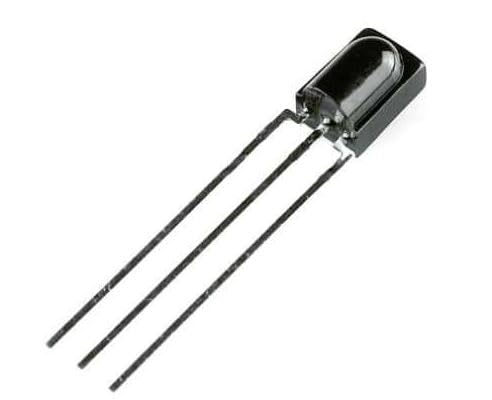
The sensor is used to receive infrared signals, typically from remote controls. It detects modulated IR light and converts it into a digital signal for microcontrollers.
Pinout:
Typically includes:
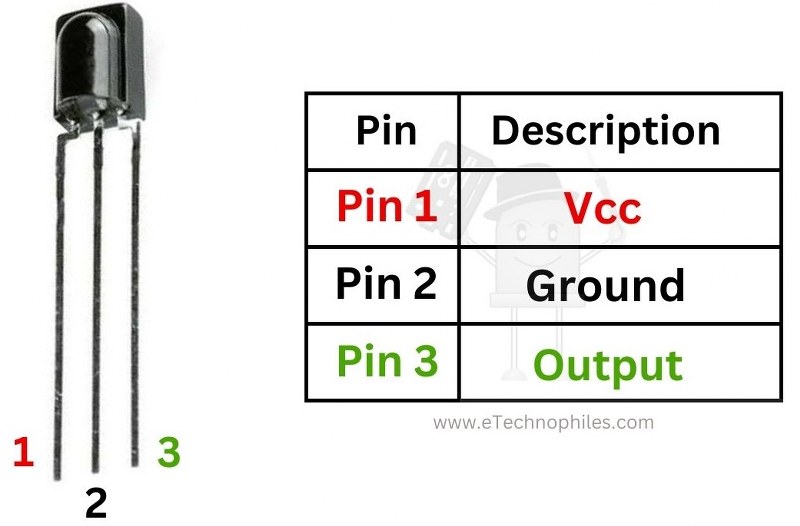
- VCC – Power supply (usually 3.3V or 5V)
- GND – Ground connection
- OUT – Digital output signal when IR is detected
43. Fingerprint sensor
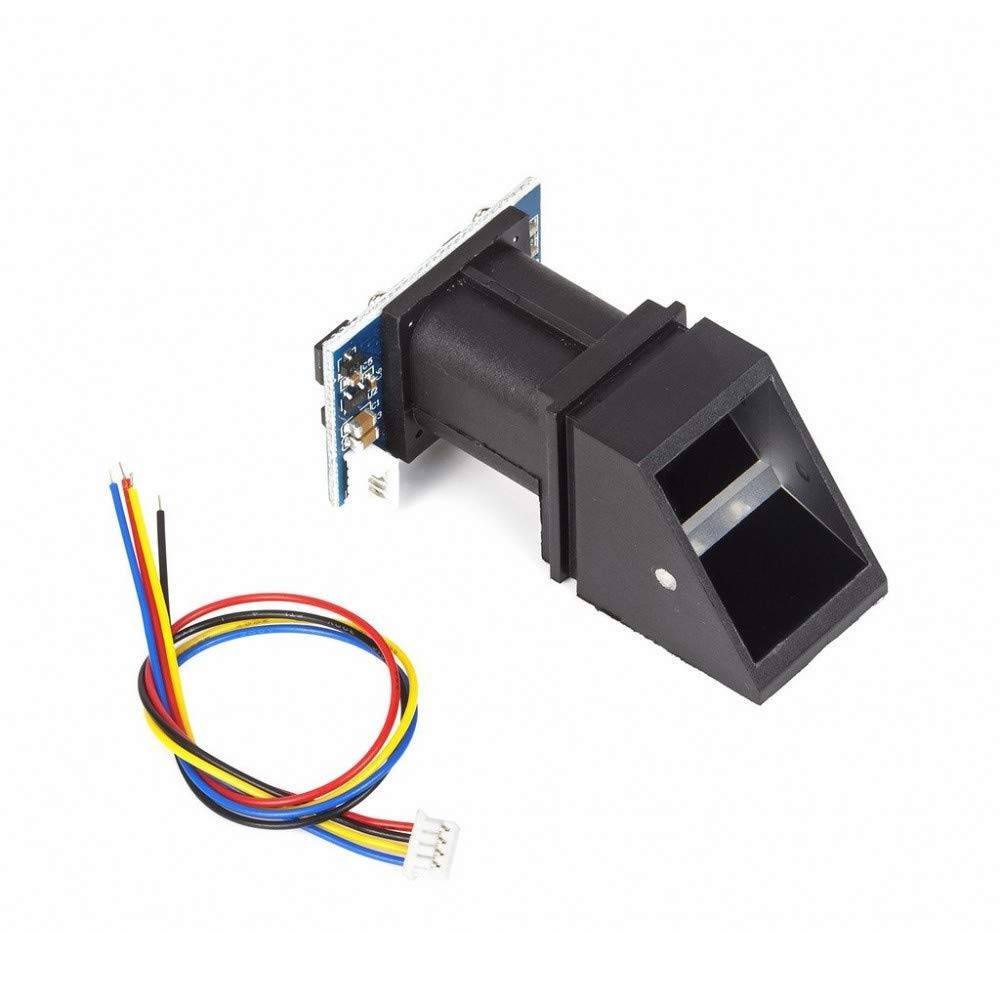
The sensor detect characteristics such as fingerprints, facial features, iris patterns, or heart rate signals to verify or identify individuals. They convert biometric data into digital signals that can be processed by microcontrollers or security systems.
Biometric sensors are widely used in smartphones, access control systems, attendance tracking, and personalized healthcare devices, offering secure, contactless, and user-friendly authentication methods.
